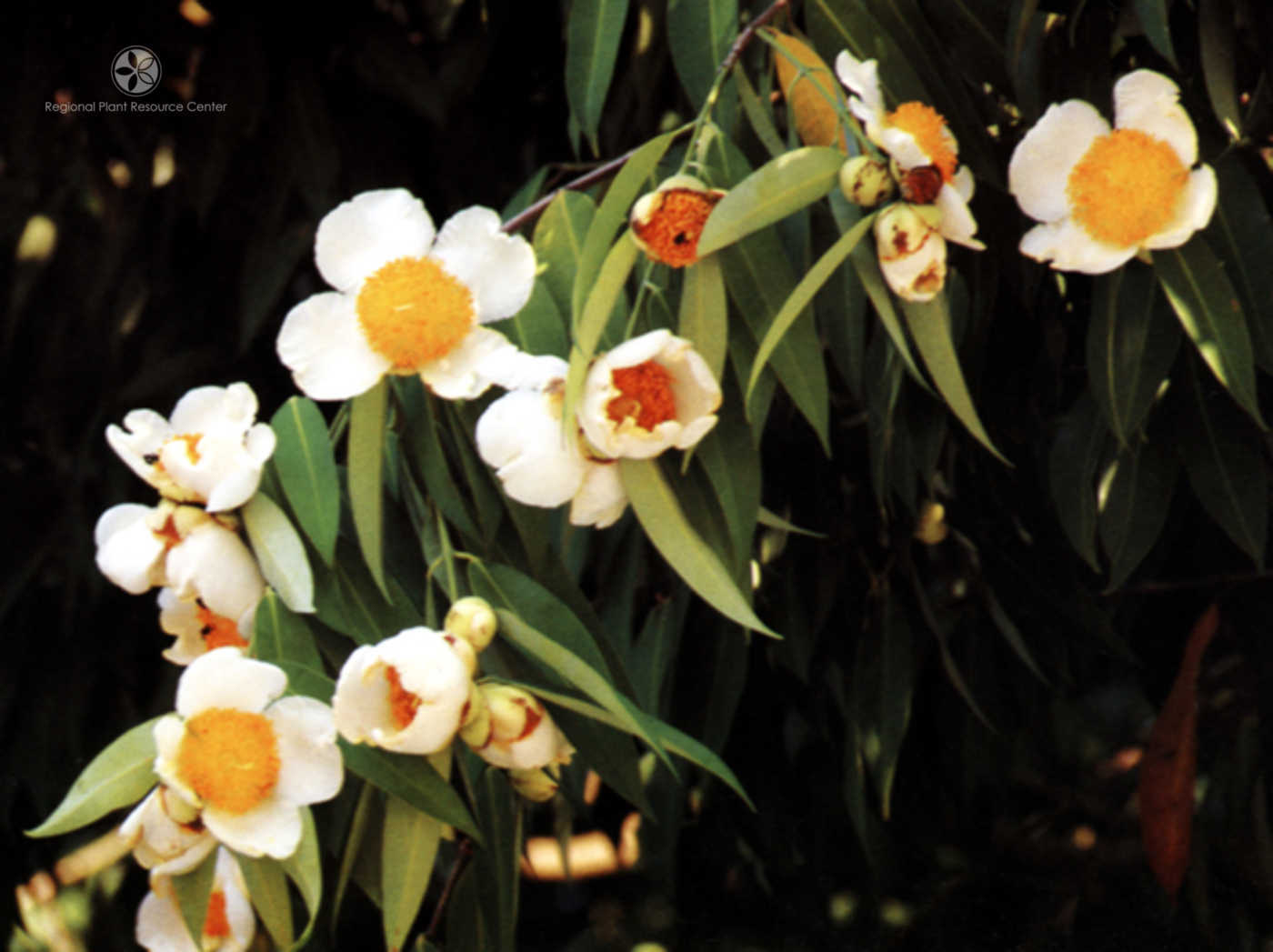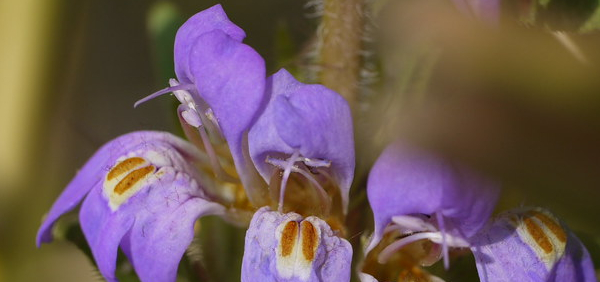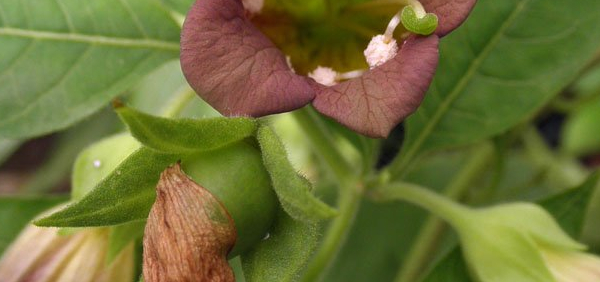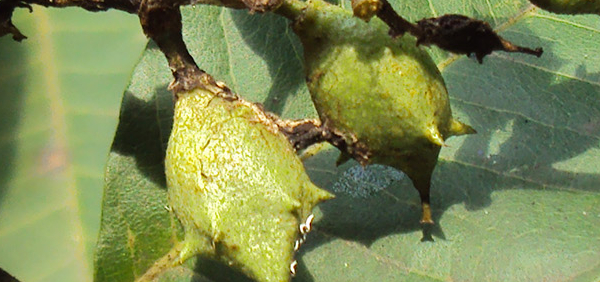nagakeshara :

Substitute:
अभावे नागपुष्पस्य पद्मकेशरमिष्यते ||१६५|| – Bhava Prakasha
Padmakeshara – stamen of lotus is used as substitute for Mesua ferrea.
Adultrants:
- Laal Nagakeshara – immature floral buds of Punnaga (Calophyllum inophyllum) & Sura punnaga (Mammea suriga)
- The unripe fruits of Cinnamomum wightii or Cinnamomum tamala are sold in the markets of Chennai, which is considered as an adulterant Malabar Nagakeshara
- Unripe fruits of Bhavya (Dillenia indica) is sold as Nagakeshara in Kerala.
VARIOUS SPECIES SOLD UNDER NAGAKESARA
Mesua ferrea Linn.
Mesua ferrea Linn. belonging to family Guttiferae is a source of Nagakesara. Useful part is stamen. It is a middle sized, glabrous tree, trunk is straight, erect smooth bark which is ash-coloured, young branches are twiggy, slender. Leaves are 7.5 - 12.5 by 2.5 - 3.8 cm oblong lanceolate, acute or acuminate, red when young, afterwards shinging above, glaucous and pruinose, beneath rounded or acute at the base and with close, inconspicuous nerves, petioles are 6-8 mm long. Flowers are very fragrant, 2.5 - 7.5 cm. in diameter, axillary or terminal, solitary or in pairs, subsessilemhunds, subglobose, bracts. Sepals are 4, orbicular, cupped, puberulous outside, presistent, the inner pair much longer than the outer, Petals are 4, pure white, Spreading, obovate undulate, with crisped and undulate margins, often torn. Stamens are verynumerous, golden yellow, much shorter than the petals, slightly united at the base into a fleshy ring, anthers are oblong. Style is twice as long as the stamens, stigma is peltate. Fruits are 2.5 - 3cm. long, ovoid with a conical point, surrounded by the enlarged sepals, pericarp is tough, semi-woody, at length 2-valved. Seeds are 1-4 angular, smooth, chestnut brown. Mesua ferrea Linn. is commonly distributed in mountains of East Himalaya and East Bengal, Assam, Tenasserim, Burma, Andamans, evergreen rain forests of North Karnataka, Western Ghats from South Karnataka to Travancore, upto 5,000 feet.
Ochrocarpus longifolius
Benth & Hook It also belongs to family Guttiferrae. Part used is dried floral bud. Ochrocarpus longifolius Benth. & Hook is a big tree with very pretty and glossy foliage. Young shoots are slightly 4 gonous. Leaves are thickly coriaceous, 15-20 by 5-6.3cm, oblong, obtuse margins and prominent midrib, base is round, veins inconspicuous in fresh, but beautifully reticulate in dried specimens; petiole is 6 mm. long, stout. Tiny flowers are borne in clusters on the tree trunk and mature branches. Flowers have a very pleasant scent, which lasts even when the flowers dry up. The flowers appear in the hot weather and the fruits ripen during the rainy season. Flowers are numerous, in short fascicles on tubercles from the axils of fallen leaves; buds globose, apiculate, orange-red; pedicels 1.2-2 cm. long 2 valves, reflexed during flowering. Petals are 4, ovate-oblong, acute, thin, deciduous, white streaked with red. Stamens are many, sterile in the female flowers. Style is short, stout; stigma is broad, peltate. Fruits are 2.5 cm. long, obliquely ovoid, tipped by the hard, pointed style, 1-seeded. Ochrocarpus longifolius Benth. & Hook is commonly distributed in Western Ghats of the Konkan, Northern Kanara, Malabar and Coimbatore and cultivated in the Northern Circars[8],[9] The flowers of Lal Nagakesara are fragrant, sweet, cooling, analgesic, stomachic, aphrodisiac; pacifies Kapha, dispel biliousness; good in blood diseases, leprosy etc. It is a tonic for heart, is antispasmodic, diuretic and emmenagogue. It exhibits significant antiinflammatory and styptic activity. Main uses has been described in leucorrhoea and for controlling bleeding in menorrhagia and piles. Its use in menorrhagia may be due to its action on capillaries. Also useful in metrorrhagia, chronic dysentery with mucus, skin eruptions and haemoptysis.
Dillenia pentagyna Roxb.
Dillenia pentagyna Roxb. belonging to family Dilleniaceae is a source of Malabar Nagakesara. The part used is dried fruit enclosed by calyces. It is a large deciduous tree grows up to 40 meters in height. Leaves are large, 1-2 ft, alternate, ovate-rhomboid, obtuse or acute. Flowers are yellowish, fragrant, 2-3 cm across, arise from the nodes of fallen leaves, on panicles. Fruits are 2.5 cm in diameter, globose which contain single seed. The flower-buds and young fruits have a pleasant, acid flavor and are eaten raw or cooked in south and central India. The ripe fruits are also eaten. Dillenia, named in honour of J. J. Dillenius (1684-1747), a noted botanist. Pentagyna in allusion to the flower having five styles.[11] Dillenia pentagyna Roxb. is distributed in Indo-Malaysian areas extending to tropical Australia; throughout India particularly in subtropical Himalayas, found in most places of Mizoram state, India. The plant pacifies vitiated Vata, Kapha, anal fistula, wounds, diabetes, diabetic carbuncle, neuritis, pleurisy, pneumonia, and burning sensation.
Callophyllum inophyllum Linn.
It belongs to family Guttiferrae and part used is bark and seed oil. Callophyllum inophyllum Linn. (Kamani) is a very handsome, small or middle-sized glabrous tree, with a crooked trunk; bark grey, smooth. Leaves are 10-18 by 7.5-10 cm. broadly elliptic, rounded at the apex, often emarginated, with waved margins and very close lateral nerves, giving a striate appearance to the blade; base acute; petioles are 9-15 mm. long, stout, flat. Flowers are 1.9-2.5 cm in diameter, pure white, fragrant, few-flowered racemes are 10-15 cm. long. Sepals are 4, ovate-orbicular, concave, reflexed. Petals are 4, oblong, obtuse, spreading. Stamens are numerous; filaments are united into 4-6 bundles. Style is long, twisted; Stigma large, mushroom-shaped. Fruits areglobose, 2-5-3.8 cm. diam, smooth, yellowish; pulp is scanty. It grows along coastal areas and adjacent lowland forests, although it occasionally occurs inland at higher elevations. Callophyllum inophyllum Linn. is distributed along the Eastern and Western coasts of the Peninsula, Burma, the Andamans and Malaya Peninsula, Ceylon, Eastern African Islands, Malaya, Australia, Polynesia. Bark is hot with a sharp taste; heals ulcers and inflammation of the eye; destroys "Kapha" and "Vata;" lessens appetite; astringent; improves the complexion. In Southern India, the oil of the seeds of the plant is used specifically for treating skin diseases. It is also applied topically in cases of rheumatism. The oil is useful in waterproofing cloth and is used as a varnish. In the old days an extract from the fruit was used to make a brown dye to colour cloth. The oil can also be used to make soap.
Cinnamomum tamala Fr-nees:
It is a small evergreen tree up to 1.4 m. girth and 7.5 m. high. Bark is dark brown or blackish, slightly rough. Leaves are opposite, sub opposite or alternate, 12.5-20 by 5-7.5 cm., ovate lanceolate or oblong, acuminate, the acumen often falcate, coriaceous, glabrous, scarcely shining above, glaucous beneath, 3-nerved from close above the base almost to the apex. Petiole 7.5-13mm. long. Flowers are 7.5 mm. long, pale yellowish, in axillary and terminal lax puberulous panicles 5-15 cm. long. Perianth- lobes 6, oblong, silky pubescent, breaking off transversely below the middle after flowering. Filaments are villous. Drupe is 13 mm. long, ovoid, fleshy, black, supported by the enlarged perianth-tube bearing the truncated perianth-lobes. It is distributed throughout tropical and subtropical Himalaya upto 3,000-7,800 ft. The leaf is bitter, sweetish; useful in vitiated Vata, scabies, diseases of the anus and rectum, piles, heat troubles, bad taste. The essential oil of the leaves is used as carminative, anti flatulent, diuretic and in cardiac diseases.
- » Classification and names of nagakeshara
- » Synonyms and definitions of nagakeshara
- » Drug Properties of nagakeshara
- » Chemical Constituents of nagakeshara
- » Standardization of nagakeshara
- » Parts used and Dosage of nagakeshara
- » Morphology and Histology of nagakeshara
- » Distribution and Conservation of nagakeshara
- » Cultivation of nagakeshara
- » nagakeshara in the market
- » Medicinal Uses of nagakeshara
- » Researches and clinical trails of nagakeshara
- » nagakeshara in other sytems of medicine
- » Ayurvedic formulations with nagakeshara
- » Images of nagakeshara













